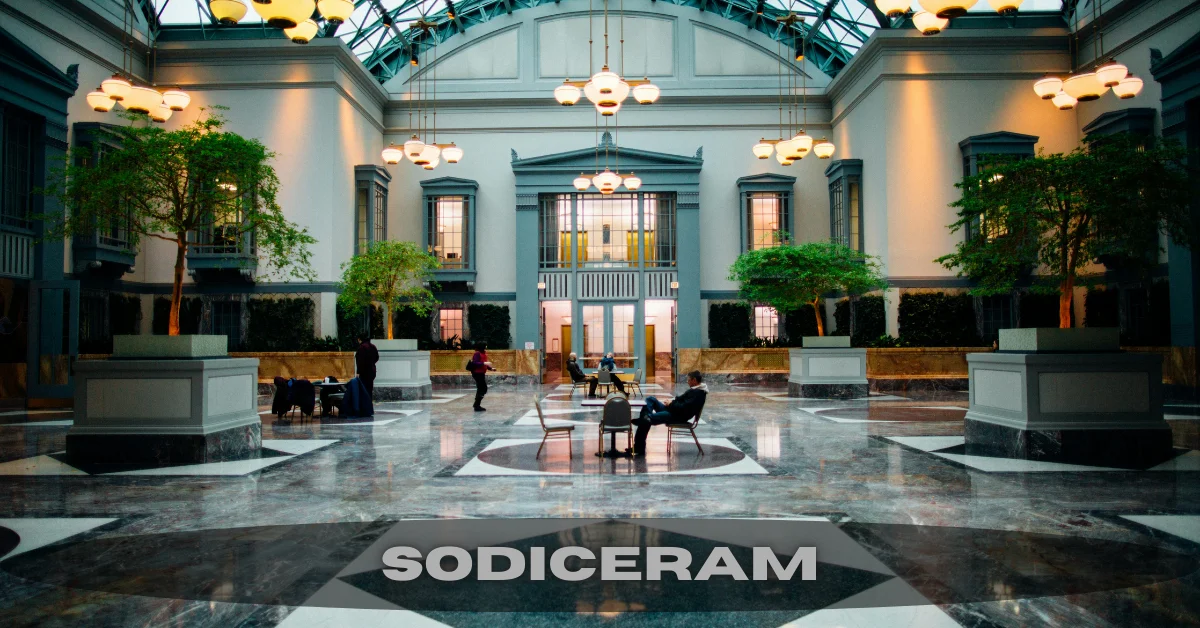In a growingly developing technology- and sustainability-focused era, Sodiceram is one of the pioneer industry brands that are engaged with high-tech ceramic material business. With its impeccable track record of pioneering research, rigorous quality assurance, and high-performance production capability, Sodiceram has transformed industry design and manufacture with ceramic-derived materials.
What is Sodiceram? A Legacy of Precision and Performance
Sodiceram is globally renowned high-technology ceramic material brand. Sodiceram’s high-tech ceramics are created to operate under extremely severe operating conditions, with increased hardness, heat endurance, electrical insulation, and chemical inertia.
Based on rich experience and focus on R&D, Sodiceram has created the solutions for the most difficult problems of the contemporary industry. Sodiceram is a pioneer in ceramic technology, with proven performance under the most severe operating conditions.
Science of Sodiceram: Materials and Composition
Sodiceram takes advantage of a broad array of high-tech ceramic materials, each of which is specifically designed to perform specific industrial functions. The main materials are:
Alumina (Al₂O₃): Suitable for wear resistance, electrical insulation, and mechanical hardness. Employed in electronic insulators and surgical implants.
Zirconia (ZrO₂): Famous for toughness and anticracking behavior. Employed in cutting tool and dental implant industries.
Silicon Carbide (SiC): Highly hard and heat conductive, aerospace and auto use.
Silicon Nitride (Si₃N₄): Highly light and highly strong; application in turbochargers and ball bearings.
Cordierite and Mullite: For kiln furniture, refractory linings, and heat exchangers.
All of them are custom processed for best performance attributes like density, porosity, and microstructure.
State-of-the-Art Manufacturing Processes
Sodiceram has the finest ceramic shaping and sintering equipment. The process involves:
Powder Processing
High-purity ceramic powder is created by careful production and mixing. Granulometry, water content, and purity levels are tightly controlled.
Forming Methods
Sodiceram employs a range of forming techniques that include:
Uniaxial pressing
Injection molding
Slip casting
Tape casting for thin substrates
Sintering and Densification
Materials are sintered to densification and grain size specifications at high temperature in atmosphere-controlled furnaces.
Finishing and Machining
Parts are then accurately ground, lapped, and polished to sub-micron tolerances as required after sintering. High-performance CNC machining provides accurate dimensional control and complex geometries.
Applications of Sodiceram in Advanced Industry
Sodiceram ceramics find application in some of the most challenging applications in industries:
Aerospace and Defense
Space thermal protection systems for space vehicles
Nose tips for missiles
Parts in jet engines
Ballistic armor plate
Automotive
Fuel injector nozzles and glow plugs
Turbocharger rotors
Brake disks and pads
Sensor housing components
Medical and Dental
Biocompatible dental implants and hip joint crowns
Zirconia surgical instruments
Microfluidic lab-on-chip devices
Electronics
Circuit board substrates
Feedthroughs and insulators
MEMS and semiconductor substrates
Energy and Environment
Gas turbine components
Solid oxide fuel cells (SOFC)
High-efficiency filtration equipment
Catalytic converters
Sodiceram materials offer greater service life, reduced maintenance, and greater reliability, particularly in high-stress, corrosive, or heat-unstable conditions.
One of Sodi ceram’s most advanced abilities is that it is able to provide design-to-specification ceramic parts. The company works with customers to co-design parts tailored to special application requirements, including:
Thermal expansion compatibility
Mechanical load limits
Electrical resistivity
Chemical interaction with the surrounding environments
This custom development offers optimal integration of ceramics into advanced systems and mechanical assemblies.
Sustainability and Environmental Stewardship
Sodiceram engages in sustainable production:
Use of recyclable raw materials
Low-waste production cycles
Energy-efficient sintering processes
Application of environmentally friendly binders and additives
Sodiceram is a part of the global movement towards green energy and clean technology using low-carbon footprint solutions.
Research, Development, and Innovation
Sodiceram is a research-driven organization. The company invests significantly in internal R&D and intensive cooperation with universities, labs, and industrial think-tanks on a long-term basis. The primary R&D domains are:
Nano-ceramics and hybrid materials
3D printing of ceramics by additive manufacturing
High-temperature superconductors
Self-healing ceramic composites
The innovation positions Sodiceram as a future-proof supplier, continuously setting the boundaries for ceramics.
Certifications and Quality Assurance
Sodiceram products are produced with stringent quality control measures. Certifications are:
ISO 9001 for quality management
ISO 13485 for manufacture of medical devices
ISO 14001 for environmental management
AS9100 for aerospace use
Every batch undergoes rigorous mechanical, thermal, and dimensional testing, via non-destructive inspection (NDI), SEM examination, X-ray diffraction (XRD), and microhardness testing.
Global Reach and Customer Reliability
Sodi ceram has an international network of distribution and technical support centers. It has a robust logistics support mechanism to facilitate on-time delivery, customer interface locally, and technical advisory services for smooth integration of the ceramic components in the customer system.
Company values:
Precision engineering
Partnership-based innovation
Green technology
Customer-focused solutions
The synergy has transformed Sodiceram into a highly dependable brand among OEMs, research institutions, and industry majors.
Future Opportunities: The Road Ahead for Sodiceram
As the world makes the shift towards smart manufacturing, IoT implementation, and sustainability, Sodiceram has the potential to show the way with:
Digital twin simulation of ceramics
AI-based defect prediction
3D-printed ceramic lattice structures
Wearable bioceramic technology
These strategic initiatives are bound to optimize processes, reduce waste, and usher in entirely new areas of use.
Conclusion:
In the age of high-tech innovation, Sodiceram is the epitome of technical ceramic perfection. By continuous innovation, enhanced quality, and dedication to finding pragmatic solutions, the company maintains the engineering forefront in all aspects.
